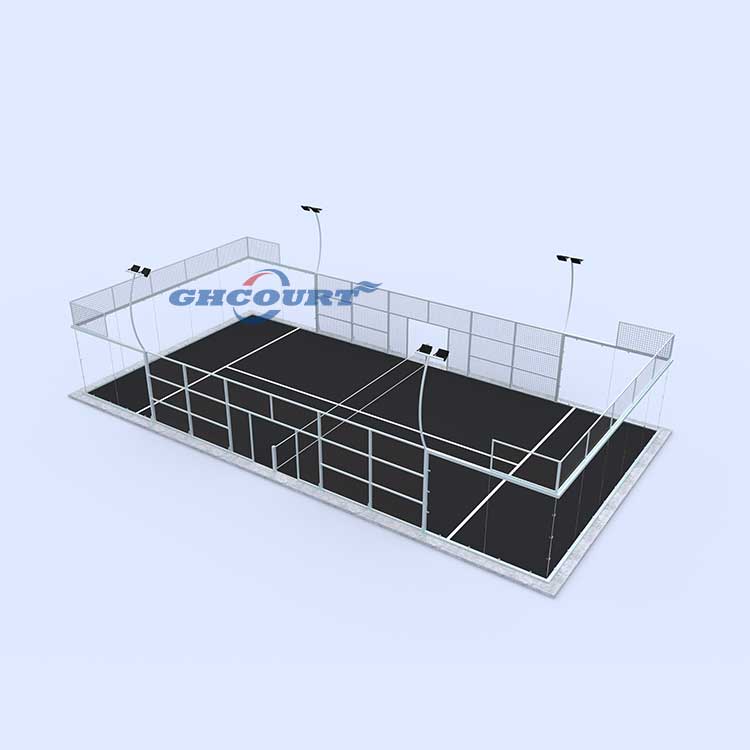
Understanding the Unique Padel Tennis Court
You’ve heard of padel, a sport that’s been gaining immense popularity around the globe. It’s often referred to as “padel tennis” because of its similarities to tennis, but the court itself is what truly sets the game apart. A padel court isn’t just a simple rectangle with a net; it’s a specially designed enclosure that dictates the entire flow and strategy of the game.
The Key Dimensions of a Padel Court
A standard padel court has very specific dimensions that make it unique:
Length: 20 meters (65.6 feet)
Width: 10 meters (32.8 feet)
This makes a padel court significantly smaller than a standard tennis court, which is 23.77 meters long and 10.97 meters wide for doubles. The compact size of the padel court promotes faster, more dynamic play and keeps all four players in close proximity to the net.
The Defining Feature: The Enclosure
The most unique aspect of a padel court is that it’s an enclosed space. The court is surrounded by walls, which are an active part of the game.
Materials: The walls are typically a combination of tempered glass and wire mesh (metal grids). The glass is usually on the back and parts of the side walls, allowing spectators a clear view and providing a consistent surface for the ball to bounce off of. The wire mesh is used for the rest of the enclosure.
Playing with the Walls: Just like in squash, players can hit the ball off the walls after it has bounced on the court. This rule adds a thrilling strategic layer to the game, as rallies can be much longer and more complex than in tennis.
Other Key Components of a Padel Court
Besides the walls, a padel court has other important features:
The Surface: The playing surface is made of artificial grass (turf) filled with sand. This surface provides excellent grip, reduces joint impact, and ensures a consistent ball bounce.
The Net: The net is similar to a tennis net but is slightly lower, measuring 0.88 meters high in the center.
Lighting: Many courts are equipped with powerful LED lights to allow for evening play, making the sport accessible at all hours.
Padel vs. Tennis: Why the Court Matters
The difference in court design is the main reason why padel feels so different from tennis. The small, enclosed court forces players to use different strategies, focusing more on teamwork, volleys, and precise shots rather than powerful serves and groundstrokes. It’s a game of skill and patience, where a rally can continue for a long time thanks to the use of the walls.
In short, a padel court is a meticulously designed playing area that is central to the sport’s identity. Its unique dimensions and enclosing walls are what make padel an exciting, fast-paced, and highly social game that’s attracting players all over the world.
about
GHCOURT
We are a globally leading manufacturer of Padel Courts, dedicated to providing high-quality, professional-grade Padel court solutions for sports enthusiasts, clubs, and commercial venues. With years of industry experience and technological innovation, we specialize in designing, manufacturing, and installing Padel courts that meet international standards, catering to diverse needs ranging from professional tournaments to home entertainment.
